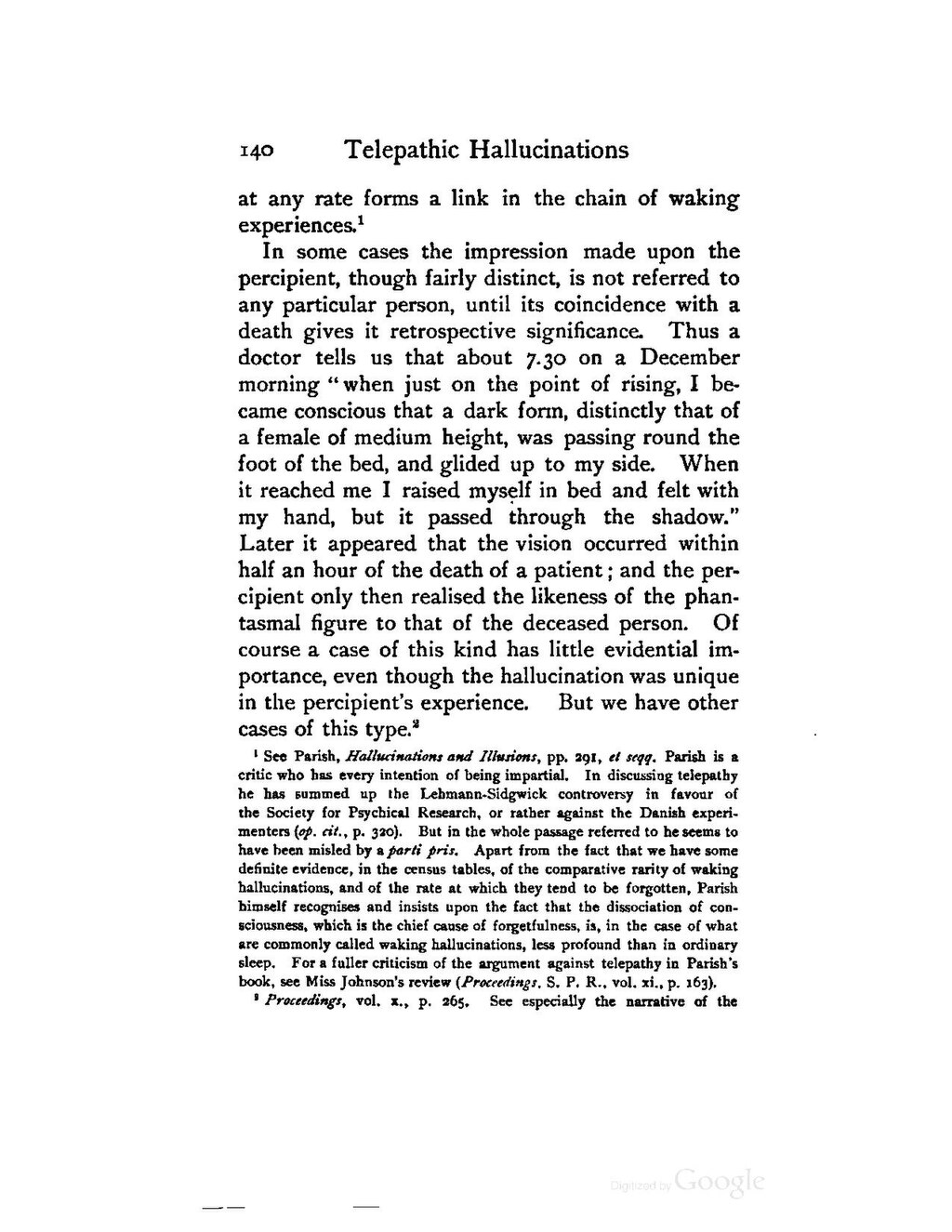at any rate forms a link in the chain of waking experiences.[1]
In some cases the impression made upon the percipient, though fairly distinct, is not referred to any particular person, until its coincidence with a death gives it retrospective significance. Thus a doctor tells us that about 7.30 on a December morning "when just on the point of rising, I became conscious that a dark form, distinctly that of a female of medium height, was passing round the foot of the bed, and glided up to my side. When it reached me I raised myself in bed and felt with my hand, but it passed through the shadow."
Later it appeared that the vision occurred within half an hour of the death of a patient; and the percipient only then realised the likeness of the phantasmal figure to that of the deceased person. Of course a case of this kind has little evidential importance, even though the hallucination was unique in the percipient's experience. But we have other cases of this type."[2]
- ↑ See Parish, Hallucinations and Illusions, pp. 291, et seqq. Parish is a critic who has every intention of being impartial. In discussing telepathy he has summed up the Lehmann-Sidgwick controversy in favour of the Society for Psychical Research or rather against the Danish experimenters (op. cit. p. 320). But in the whole passage referred to he seems to have been misled by a parti pris. Apart from the fact that we have some definite evidence, in the census tables, of the comparative rarity of waking hallucinations, and of the rate at which they tend to be forgotten, Parish himself recognises and insists upon the fact that the dissociation of consciousness, which is the chief cause of forgetfulness, is, in the case of what are commonly called waking hallucinations, less profound than in ordinary sleep. For a fuller criticism of the argument against telepathy in Parish's book, see Miss Johnson's review (Proceedings. S. P. R.. vol. xi.. p. 163).
- ↑ Proceedings, vol. x., p. 265. See especially the narrative of the
